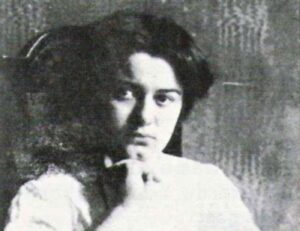For defenders of aesthetic purity, “didactic” is a descriptor of great disdain. Any piece of art that delivers a “message” is a priori suspect. This may come as some surprise to any human being caught up in the business of raising children. Doesn’t any parent with some share of sanity disdain not “didactic” stories, but stories that celebrate immorality and evil? Don’t parents mine the library for tall tales that laud moral excellence, exercising broad tolerance of narratives that resolve with a moral?
It might be tempting to conclude that perhaps humans “evolve” from childish reliance on a moral aesthetics to a mature rejection of all but nuanced shades of grey. In truth, this “either/or” attitude—either literature teaches good lessons or it is good art—is itself a reductive, primary-color ethics of aesthetics. Yes, the flattening of literature to a mere moralistic map teaching us “good moral attitudes” is a crime. Yet surely one of the great gifts of a good story is its capacity to show, with all the persuasiveness of thick tangibility, how perilous it is to peddle the fiction that moral facts can be smashed like pumpkins without painful, soulful consequence.
As author Michael Clune recently told The Chronicle of Higher Education, “it would be insane to suggest that aesthetic education would somehow be capable of bracketing moral questions.” Actual, careful encounters with literature incite a “kind of transformative receptivity” that may effect the transformation of the reader. Lovers of literature, Clune concludes, should have no patience with the dogmatic suspension of life-alteration. All great poems and all great novels repeat the last line of Rilke’s “Archaic Torso of Apollo”: “You must change your life.”
All great poems and all great novels repeat the last line of Rilke’s “Archaic Torso of Apollo”: “You must change your life.”
Start your day with Public Discourse
Sign up and get our daily essays sent straight to your inbox.“Show, Don’t Tell”?
In the bad old days, novelists could moralize liberally, telling us exactly what to think about their cast of characters, blending action and axioms in a blatant and sometimes awkward fulfillment of Horace’s Ars Poetica: he who succeeds in “delighting and at the same time admonishing the reader . . . carries off every vote.” In great nineteenth-century novels from Thackeray to Tolstoy, we meet variations of the “vocal authorial narrator” who, Dorrit Cohn observes, “is unable to refrain from embedding his character’s private thoughts in his own generalizations about human nature.”
As time marched on, however, fiction writers and readers alike wearied of such primary-color pronouncements; quick movement from the particular consciousness to the general type, from the action to the axiom, became the telltale sign of an infantile artist. Fiction became the genre of moral subtlety and then moral relativism, and its condemnation of “messages” found voice in yet another platitude: “show, don’t tell.”
Showing without telling could lead to unexpected ethical takeaways. In the New York Times, celebrated Czech author Milan Kundera mused on the fate of his novel The Farewell Party:
Five years ago, a Scandinavian translator confessed to me that his publisher had wavered seriously over going ahead with The Farewell Party: “‘Everyone here is left-wing. They don’t like your message.” “What message?” “Isn’t it a novel against abortion?” Certainly not. Deep down, not only do I favor abortions, I’m for making them mandatory! Still, I was delighted with this misunderstanding. I had succeeded as a novelist. I succeeded in maintaining the moral ambiguity of the situation. I had kept faith with the essence of the novel as an art: irony. And irony doesn’t give a damn about messages!
But irony—saying one thing to communicate another—is not an essence or an end in itself. Irony is a means toward other aims, and by nature it almost inevitably appeals to moral scales, even if at its most mature it does so indirectly. In Northrop Frye’s formulation, irony is “dispassionate construction of hypothesis, with all assertive elements, implied or expressed, eliminated.” Dispassion and discretion, though, don’t amount to indifferentism.
Irony—saying one thing to communicate another—is not is not an essence or an end in itself. Irony is a means toward other aims
The Violence of Irony
Consider the way irony plays out in Michael Chabon’s “Along the Frontage Road,” which begins with a deeply sensed description of a father gutting a pumpkin: “I do remember the way [he] would go after our pumpkins, once we got them home, with the biggest knife from the kitchen drawer.” Although the narrator’s father is a “fastidious man” who “hated to dirty his hands,” he was a doctor by trade, “and there was something grimly expert about the way he scraped the orange crania, excised the stringy pulp, and scraped clean the pale interior flesh, with the edge of a big metal spoon.”
The account is intense, violent even. There is no commentary, no generalizing or pedantry—only verbs and adjectives that provoke discomfort. This grotesque pumpkin carving with which the story starts disappears into the background until it returns with force later on, scraping from the reader a visceral ache when we find that an abortion haunts the narrator’s marriage.
As it happens, his wife has just ushered both her husband and their son out of the house, suggesting they pick pumpkins without her this year, and both son and father obeyed without delay, for the house is haunted with grief: “ordinary sounds—a fork against a plate, the creak of a stair tread—felt like portents.” As they approach the pumpkin vendor, the narrator muses on their deceased, “a girl of seventeen weeks, a theoretical daughter startled in the darkness and warmth of her mother’s body, or so I imagine it, by a jet of cool air and a fatal glint of light.”
On the one hand, Chabon operates in accord with Kundera’s sense, allowing ambiguity plenty of space to pace, chin in hand but hesitant, around the room. Maybe the abortion was medically induced to save the mother’s life. Maybe both she and her husband regret the decision terribly. Maybe she doesn’t, but he does. Maybe. Whatever the case may be, there is a moral end to Chabon’s montage-melded affiliation of “grimly expert” pumpkin carving and the “fatal glint” of the abortion.
Unexpected Ethical Territory
This affiliation only intensifies as the story twists toward its finale. When the narrator pushes his son Nicky to “Go find yourself a nice big pumpkin,” because “you won’t be able to put a candle” in the tiny one he first retrieves, Nicky resists: “I don’t want a big pumpkin. I don’t want to put a candle in it. I don’t want you to cut it open with a knife.” Protesting still more, he pleads with his father to “call Mommy . . . She will tell you not to cut up my pumpkin.” The narrator is unnerved by his son’s sudden tears, and feels as though he asked Nicky to “bring me a neck to wring for supper,” for “he had never before shown such solicitude for the annual sacrificial squash.”
The father’s projection betrays more than just emotional weight; in encouraging or consenting to the abortion, he has done something wrong. He has wrung a neck. He has offered up a sick, squashed sacrifice to gods who turn out to be fallible: in the wake of his son’s awkward breakdown, the narrator first assures us that he and his wife “were given no real choice in the matter,” but soon he buckles under this self-applied coat of whitewash: “I cannot shake the feeling that in letting ourselves be persuaded by mere facts and statistics, however damning, we made an unforgivable mistake.” Note the uneasy irony. Were the facts damning in that they spelled out very bad odds for his wife’s survival? Or is he himself damned by submitting his free mind to stats and charts, as if numbers and figures could make pulp of morality?
Finally cajoled into picking out a pumpkin, Nicky says he’s “going to name it Kate,” then decides instead that he will give it to his sister, ““Because she didn’t get to have a pumpkin, since she didn’t get to ever be alive.” In its last exercise, irony births tragedy, suffusing the story with a Sophoclean sense.
“Along the Frontage Road” is bereft of the “vocal authorial narrator,” the moralizing maxim-peddler who dispenses one instruction for every three delights. But the ironic angle through which Chabon navigates an abortion’s aftermath takes us into unexpected ethical territory. Watching the father and son quibble over the cucurbita, the baffled pumpkin seller finally intervenes. “It ain’t alive,” he says, oblivious to the significance of his words, words that take us far beyond the pumpkin patch, into the pain that is proper to a loss too many are now desperately trying to transfigure into a cause for celebration.
Where Will the Work Take You?
What, then, has morality to do with literature? Michael Clune is right to resist the ethical defense of fiction that promises “encountering these texts will make you a better person in X, Y, and Z ways.” That’s because “the enterprise involves not knowing where that work will take you.” Yet it’s also true that the work will “take you” where it will both on account of the imaginative immediacy and artistic habitus of its maker and on account of that same maker’s moral imagination—however subtle its frequencies.
Defenders of careful aesthetic judgment can remind parents that, past a certain threshold, bad (read: “moralistic”) art detracts from their efforts to form good children. The ethical dimension persuades insofar as the artistic shape achieves perfection. It may not be a felony to permit your progeny to imbibe entertainments with badly tacked-on moral “messages,” but sometimes the case for objective morality is injured when articulated through bad art. On the other hand, refined aesthetes who would anathematize any moral meanings do damage also, as do adherents of Critical Race-or-any-other-Theory, who would degrade literature into a crime scene fit only for a narrow script of ideological moralizing.
You see, for the vast majority of the human race, the question is not whether we will wrestle with the morality of art, but how artful our wrestling will be.











